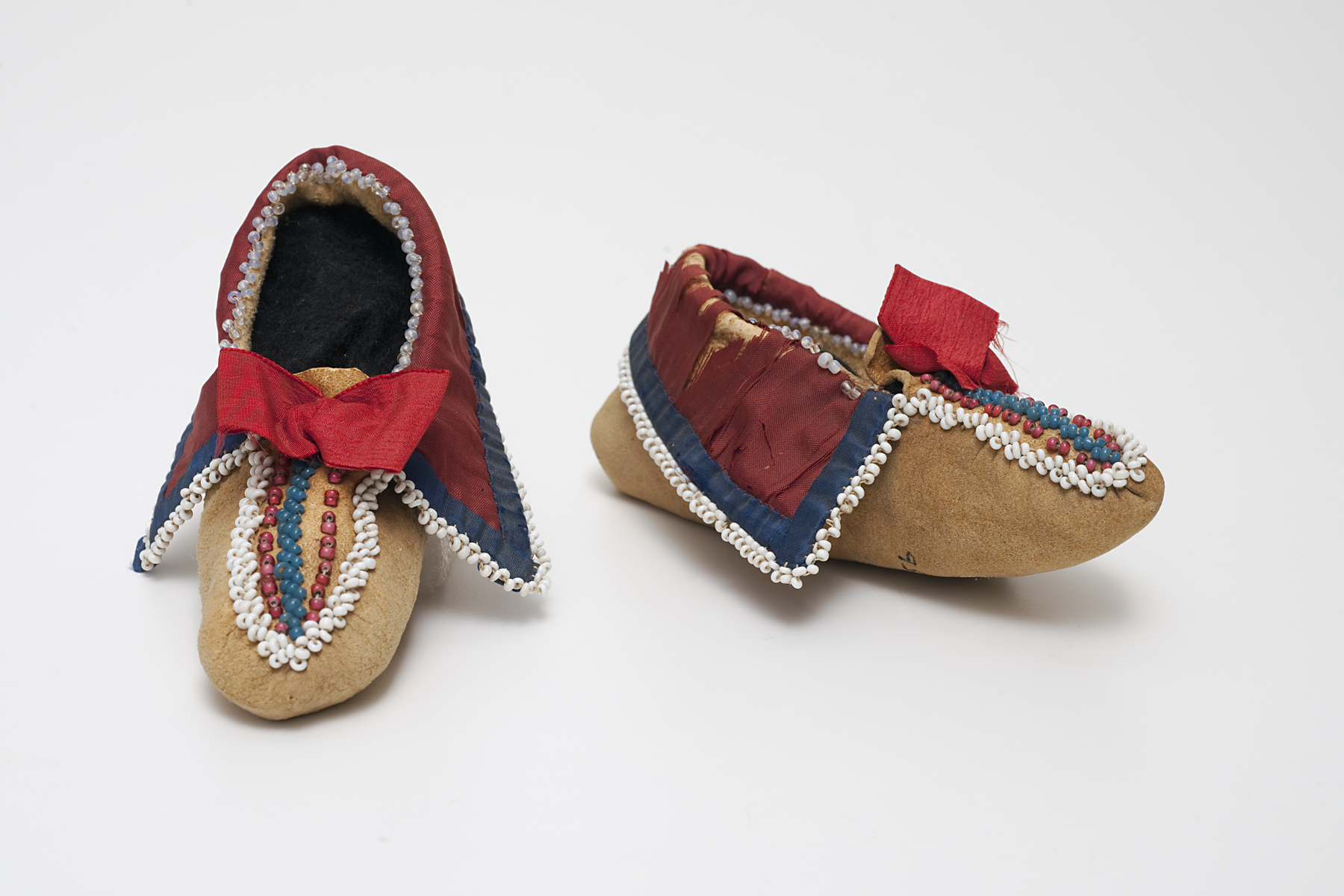pair of child's beaded moccasins, unrecorded Wazhazhe artist
Artwork Overview
pair of child's beaded moccasins,
late 1800s–1956
Where object was made: Oklahoma, United States
Material/technique: ribbon; silk; beading; buckskin; dyeing
Dimensions:
Object Height/Width/Length (Height x Width x Length): b 5.5 x 6.5 x 12 cm
Object Height/Width/Length (Height x Width x Length): 2 3/16 x 2 9/16 x 4 3/4 in
Object Height/Width/Length (Height x Width x Length): a 4.5 x 8.5 x 12 cm
Object Height/Width/Length (Height x Width x Length): 1 3/4 x 3 3/8 x 4 3/4 in
Object Height/Width/Length (Height x Width x Length): b 5.5 x 6.5 x 12 cm
Object Height/Width/Length (Height x Width x Length): 2 3/16 x 2 9/16 x 4 3/4 in
Object Height/Width/Length (Height x Width x Length): a 4.5 x 8.5 x 12 cm
Object Height/Width/Length (Height x Width x Length): 1 3/4 x 3 3/8 x 4 3/4 in
Credit line: The Father Felix Nolte Collection from the Benedictine College Museum
Accession number: 2007.3849.a,b
Not on display
If you wish to reproduce this image, please submit an image request

